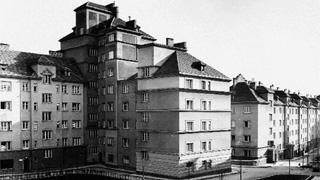From "Red Vienna" to the "Ständestaat" (1918 to 1938) - History of Vienna
Once separated from Lower Austria, Vienna embarked on a distinctly "Viennese" political course. The city became an internationally-acclaimed model of Social Democratic municipal government in the 1920s and 1930s. The popular term when speaking of this period is "Red Vienna". Against the background of constitutional changes in Vienna aimed at democratisation, radical changes in the revenue and spending policies of the city took place. These changes made the new achievements and programmes in the welfare sector possible in the first place.
The main focus was municipal housing, which won acclaim beyond Austria's frontiers. The objective was to tackle what had been one of the main problems in the city since the second half of the 19th century and provide, most of all, flats equipped with running water, toilets and adequate supply of natural daylight. Special attention was also paid to providing, in these housing estates, adequate green space and recreation areas. In the years of great economic hardship just after the First World War in particular, attempts were also made to encourage settlement on the periphery. This should give people a possibility to meet some of their needs from the small gardens attached to these homes.
Social unrest and civil war
For the first time, a real policy of redistribution was implemented, with a little more than half of the local rates being imposed on the wealthy segments of the population. This gave the government some fine successes, even in areas such as education and health care. The backdrop to all this was an increasingly difficult economic situation and - closely linked to it - mounting political radicalisation. The polarisation between the two large political blocs - the Social Democrats and the Christian Socialists - became more and more pronounced. When in July 1927 riots occurred following a miscarriage of justice, a fire broke out in the so-called Justizpalast (Palace of Justice). The spiralling political and economic crisis gained more and more momentum, punctuated by the failure of one of the country's largest banks and by growing unemployment.
Then watershed events occurred: In 1933 parliament was dissolved and a few months later, in February 1934, civil war broke out. Subsequently, the democratic constitution was suspended and a period of clerico-fascist authoritarian government ("Ständestaat") began. Vienna no longer had an elected legislature either. The new government hoped to create employment by commissioning large-scale projects, mostly road construction projects. These years must take credit for the panorama road snaking up Austria's highest mountain, the "Großglockner-Hochalpenstraße", and a similar road in Vienna up the city's small local mountain, Kahlenberg.
City of Vienna | Municipal and provincial archives of Vienna
Contact form


